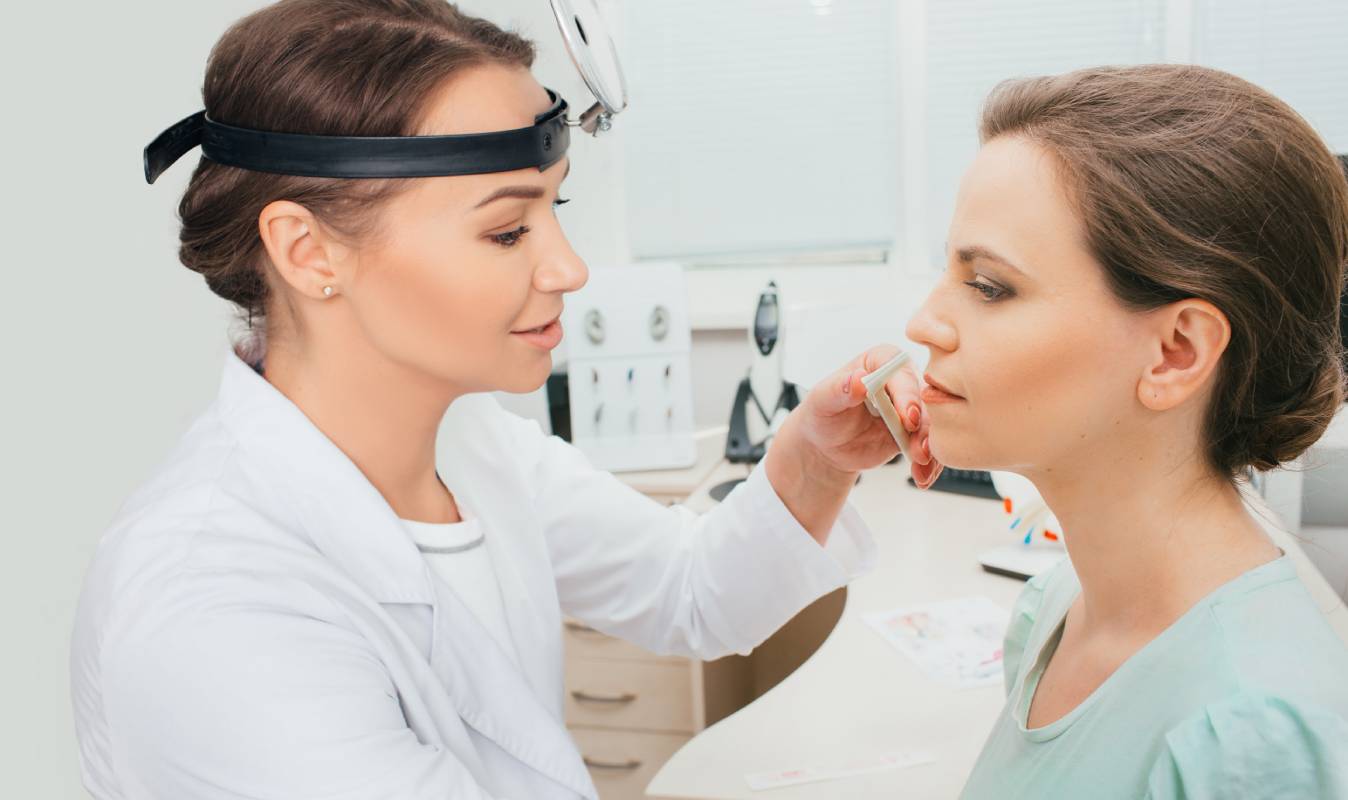In 2005, the FDA approved balloon sinus ostial dilation–also known as balloon sinuplasty, or BSD–for use in treating both recurrent acute and chronic rhinosinusitis [1]. This technique involves placing a balloon catheter into the sinus ostium; the resultant inflation dilates the sinus opening and subsequently relieves obstructions [1]. Since becoming FDA-approved, several studies have confirmed the safety of balloon sinuplasty procedures and have discovered additional benefits, including, but not limited to, avoidance of general anesthesia in certain cases [1].
During balloon sinuplasty, a patient requires anesthesia [2]. When the procedure was first introduced, patients typically received general anesthesia by way of an endotracheal tube or a laryngeal mask airway [2]. However, since its introduction, sedation and local anesthesia have become more common, facilitating a transition to office-based procedures [2]. Compared with sinus surgery performed under general anesthesia, local anesthesia-based balloon sinuplasty has the advantages of greater convenience, quicker recovery, similar technical success, and lower costs [3].
In a recent study, Naik et al. compared local and general anesthesia [4]. They split their 50 subjects into two evenly sized groups: one that underwent BSP with general anesthesia, while the other received a combined nerve block and topical anesthesia regimen [4]. The researchers found that the local anesthesia group experienced a shorter time gap between when the patient entered the operating theater and when the surgical procedure began; they also recovered quicker [4]. However, this group reported feeling more intraoperative discomfort than the general anesthesia group [4]. Additionally, surgeons performing local anesthesia were less comfortable than those treating the general anesthesia patients [4]. Nevertheless, Naik and colleagues concluded that, for “less apprehensive and motivated cases,” anesthesia providers can opt for local anesthetics which, along with promoting quicker results, are also the more cost-effective option [4].
Although it is considered an alternative to endoscopic sinus surgery (ESS), BSD is more accurately described as another tool, device, or instrument available to physicians performing ESS [1]. Instead of placing a balloon in the sinuses, physicians performing traditional ESS place an endoscope or, in more difficult cases, more specialized instruments to clear drainage pathways and potentially straighten the septum. [5]. Despite being less invasive than ESS, BSD has significant similarities with ESS in terms of anesthetic techniques [6, 7]. Therefore, when considering best anesthetic practices to use in conjunction with BSD, guidelines regarding anesthesia administration during ESS may also be relevant for anesthesia providers performing general anesthesia-based BSD.
Accordingly, anesthesia providers should take steps to avoid or minimize surgical bleeding [8]. To minimize the occurrence of surgical bleeding–the most serious form of which is capillary bleeding–some research points toward avoiding volatile anesthetic agents, which cause vasodilation, where possible [8]. Additionally, maintaining anesthesia depth by providing patients with muscle relaxants and limiting the use of positive end-expiratory pressure can prevent higher intrathoracic pressure, which increases surgical bleeding from the head [8]. Maintaining normothermia is also important for minimizing bleeding, as is administering local anesthetics and vasoconstrictors [8].
Researchers are optimistic that, in the future, patients may require minimal to no anesthesia when undergoing balloon sinuplasty [2]. While anesthetics are still necessary, opting against general anesthesia when possible and, when it is not, minimizing surgical bleeding is important to the success of BSD-based surgeries.
References
[1] C. Cingi, N. Bayar Muluk, and J. T. Lee, “Current indications for balloon sinuplasty,” Current Opinion in Otolaryngology & Head and Neck Surgery, vol. 27, no. 1, p. 7-13, February 2019. [Online]. Available: https://doi.org/10.1097/MOO.0000000000000506.
[2] A. E. Stewart and W. C. Vaughan, “Balloon Sinuplasty Versus Surgical Management of Chronic Rhinosinusitis,” Current Allergy and Asthma Report, vol. 10, 1, p. 181-187, March 2010. [Online]. Available: https://doi.org/10.1007/s11882-010-0105-3.
[3] J. Gould et al., “In-Office, Multisinus Balloon Dilation: 1-Year Outcomes from a Prospective, Multicenter, Open Label Trial,” American Journal of Rhinology & Allergy, vol. 28, no. 2, p. 156-163, March-April 2014. [Online]. Available: https://doi.org/10.2500/ajra.2014.28.4043.
[4] S. S. Naik, C. Venkategowda, N. Reddy, and S. M. Naik, “Combined Nerve Block and Topical Anesthesia: An Effective Alternate to General Anesthesia in Hybrid Balloon Sinuplasty Procedures,” Journal of Research & Innovation in Anesthesia, vol. 5, no. 1, p. 6-9, January-June 2020. [Online]. Available: https://doi.org/10.5005/jp-journals-10049-0080.
[5] “Balloon Sinuplasty v. Endoscopic Sinus Surgery Explained,” Kaplan Sinus Relief, Updated October 23, 2020. [Online]. Available: https://www.kaplansinusrelief.com/blog/balloon-sinuplasty-vs-endoscopic-sinus-surgery-explained/.
[6] A. Koskinen et al., “Comparison of intra-operative characteristics and early post-operative outcomes between endoscopic sinus surgery and balloon sinuplasty,” Acta Oto-Laryngologica, vol. 137, no. 2, p. 202-206, April 2018. [Online]. Available: https://doi.org/10.1080/00016489.2016.1227476.
[7] J. Flávio Nogueira Júnior, A. C. Stamm, and S. Pignatari, “Balloon sinuplasty, an initial assessment: 10 cases, results and follow-up,” Brazilian Journal of Otorhinolaryngology, vol. 76, no. 5, p. 588-595, September/October 2010. [Online]. Available: https://doi.org/10.1590/S1808-86942010000500009.
[8] P. Y. Tan and R. Poopalalingam, “Anaesthetic Concerns for Functional Endoscopic Sinus Surgery,” Proceedings of Singapore Healthcare, vol. 23, no. 3, p. 246-253, 2014. [Online]. Available: https://doi.org/10.1177/201010581402300310.

